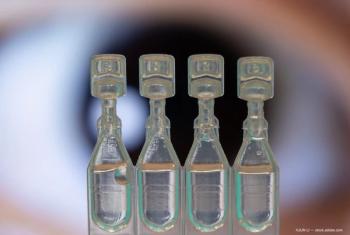
Fourier-based wavefront LASEK appears promising
Wavefront assessments showed mean HOAs had decreased significantlyby 44% from baseline, and there were mean decreases of 38% intrefoil.
New Orleans-Preliminary results from small studies suggest Fourier-based wavefront LASEK may provide a safe and effective method for enhancing highly aberrated eyes that have had previous radial keratotomy (RK) or LASIK, said Marguerite B. McDonald, MD, FACS.
For the post-RK eyes, mean uncorrected visual acuity (UCVA) improved from 20/50 preoperatively to 20/16 at 3 months. Mean UCVA for the post-LASIK cohort had improved from 20/100 to 20/25. In both groups, mean total higher-order aberrations (HOAs) had decreased significantly, and there were no complications or adverse events, reported Dr. McDonald, clinical professor of ophthalmology, Tulane University, and Director, Southern Vision Institute, New Orleans.
"The results achieved so far with these Fourier-based LASEK treatments are promising. However, these are small series with short follow-up, and we still need accurate, topographically guided ablation programs for eyes that are too highly aberrated to capture and analyze data with Hartmann-Shack systems," Dr. McDonald said.
The post-LASIK eyes were ablated on top of their flaps without lifting them; no alcohol was used but an attempt was made to save the small strips of epithelium that had been lifted, so that the procedures were really hybrids of PRK and LASEK. The ablations were done using a 6-mm optical zone and 8-mm blend zone. All of the treatments so far have been done without physician or percent nomogram adjustments.
Dr. McDonald observed that re-epithelialization in the post-RK eyes was slower compared with LASEK in virgin eyes. Mean UCVA was 20/50 on days 1 and 4 postoperatively and improved to 20/32 on day 6.
"It took 6 days before the average patient could drive without correction, which is a slower rate of recovery than that found in virgin eyes," she said.
Five eyes in that group were seen at 1 month, and UCVA at that visit ranged from 20/16 to 20/20. At the 3-month visit, mean best-corrected visual acuity (BCVA) had improved from 20/25 preoperatively to 20/20.
Mean manifest refractive spherical equivalent (MRSE) was +1.89 D preoperatively with a range up to +4.12 D. At 1 month, the eyes seen were slightly myopic (–0.31 D). Mean MRSE at 3 months was still slightly myopic (–0.42 D) with a tight range between –0.5 and –0.25 D. Manifest cylinder ranged from +0.5 to +2.25 D preoperatively with a mean of +1.16 D. At 3 months, manifest cylinder was 0.0 D in all eyes.
Wavefront assessments showed mean higher-order aberrations (HOAs) had decreased significantly by 44% from baseline, and there were mean decreases of 38% in trefoil and 100% in spherical aberration.
Newsletter
Don’t miss out—get Ophthalmology Times updates on the latest clinical advancements and expert interviews, straight to your inbox.














































.png)


